(Written by William)
There’s no question that many of Disney’s villains are what makes the movies great. So, if you’re celebrating 100 years of Disney, it makes sense that you showcase some of the most memorable baddies. And it is quite intriguing to have an adult-oriented LEGO set dedicated to the dark side of Disney. However, the $129.99 price tag gave me a bit of pause. After all, how fun would it actually be to build books and a VHS tape? Fast forward a few months and it was time to ask for review copies. Since I build these sets with my wife, she should have a say in what I ask for. And on top of her list was the #43227 LEGO Disney Villain Icons set.
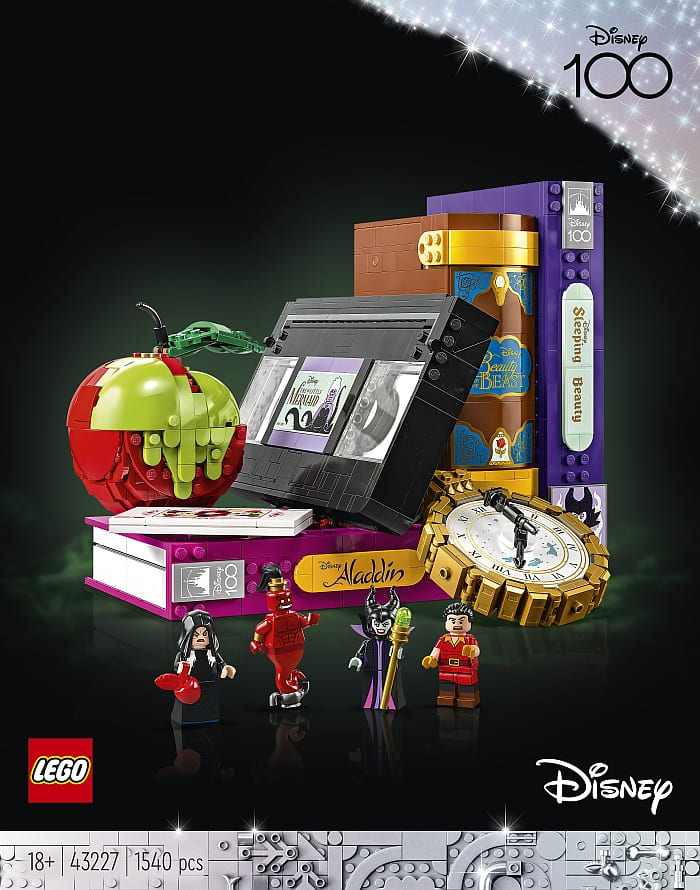
I can’t blame her, the minifigures alone are great. From the Evil Queen in disguise, to Gaston (one of my favorites), to Jafar in Genie form, and who can say no to Maleficent? All of the minifigures are new designs for this set making them highly interesting to collectors.
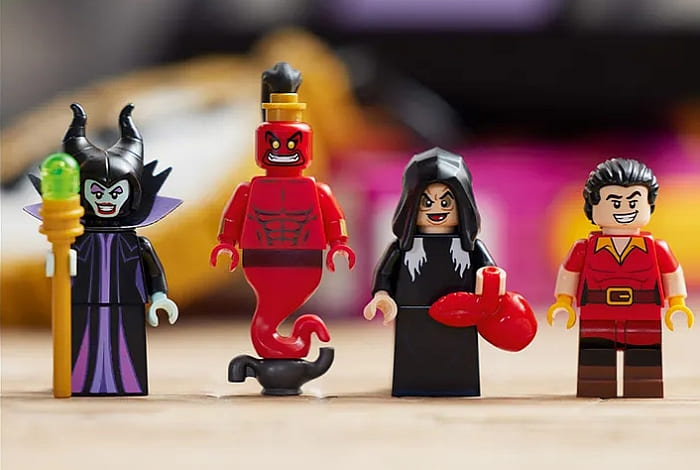
However, that still didn’t answer the question; would the rest of the model be fun to build? The short answer is yes. I was blown away by the precise shaping of each item. There is liberal use of SNOT (Studs-Not-On-Top) building techniques to keep advanced builders interested. In fact, the VHS tape is probably one of the most complex builds, despite it looking like one of the simplest. But enough gushing, let’s examine some techniques!
LEGO DISNEY VILLAIN ICONS – PARTIAL PART USAGE
Every LEGO element has what I’d call an obvious use. A brick is great for a wall. A pole is ideal for clipping things onto. And a chainsaw blade makes an excellent way to hold together a clock face…? Right from the start, when building Captain Hook’s pocket watch, you are instructed to use chainsaw blades. This seems like it’s setting us up for some novel building. However, this part is only used for a small portion of what it can do. At the end of a chainsaw blade are two studs. Between these studs is the blade itself. What this offers is a piece that is one plate thick with studs facing opposite directions. This is a very handy element to have. The problem is, I could never see past the rest of the piece.

The issue most of us have is that we give ourselves very little room to work with. Many of our creations try to utilize every inch of space possible. However, when you scale up a model, it makes more sense to have a bit of empty space inside. And this is where this technique can shine. Provided you have room, you can now partially use parts you would have otherwise dismissed. Many minifigure elements have connection points in ideal locations, but the rest of the part just gets in the way. This set reminded me that the size of a model can drastically expand potential building options. You just have to think creatively to not miss the portion of a piece that might be perfect for your usage.
LEGO DISNEY VILLAIN ICONS – HIDDEN COMPARTMENTS
When this set first came out, I heard that you could hide the Evil Queen inside the apple. That sounded neat. Then I thought, why don’t LEGO designers do more of that? Turns out, they did! This set is a treasure trove of methods on how to hide things inside your model. So, let’s go over them.
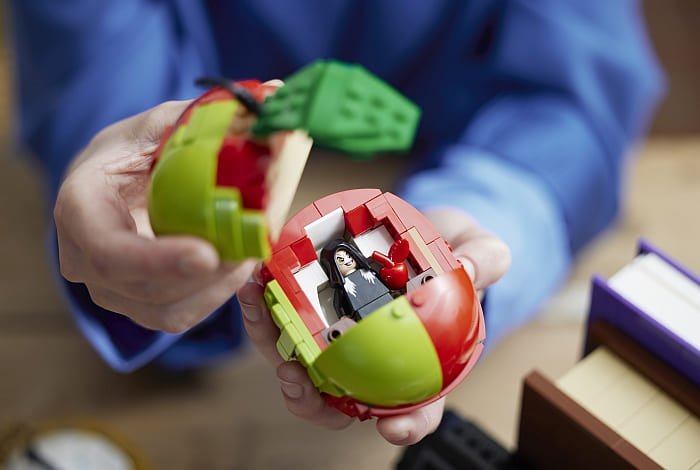
First up is the apple. This is a shell technique where your model is the outer shell of the hidden compartment. This is one of the more difficult methods to use given the fact you need to work extra hard to make each part of the shell very stable. This often comes at the cost of having limited space for your hidden compartment. And that’s kind of what we see here. There is barely enough room for the Evil Queen and her apple. So, only plan to use this if what you want to hide is small.
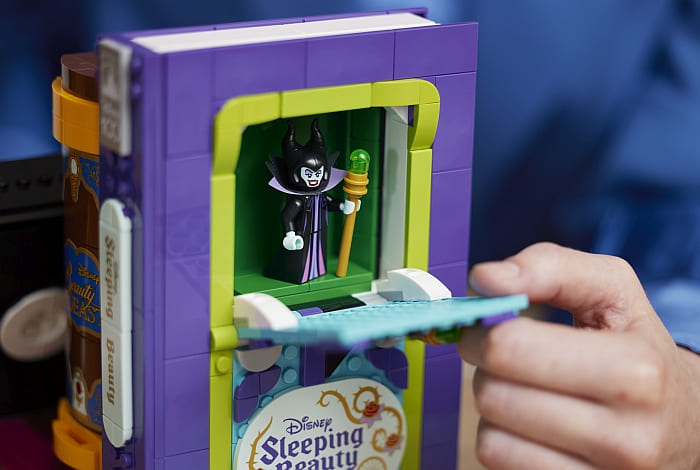
Next is the cabinet door approach. We have two instances of this in this model. Jafar and Maleficent are hidden away in the top halves of their respective books. There is simply a cubby that is hollowed out and a door that fits over them. Normally, this is what I’d suggest most people start with. It is straightforward and easy to understand. The challenge comes in when trying to figure out how to hide the hinge work and how to make it look less boring. For this, the model uses brick sketching. By making decorative images of the characters, it distracts the eye and makes it a surprise when a door is revealed.

Next up is the drawer approach. Hidden at the bottom of the Beauty and the Beast book is a little drawer for Gaston. As far as a hidden compartment goes, it’s also fairly simple. The issue some might have is that you need to make a drawer that won’t come apart when you pull it open. Additionally, the drawer is also one of the least secure hidden-compartment designs out there. This is partly why it is located so low in the model. If it were higher up, chances are, it would just fall open if things got tipped.
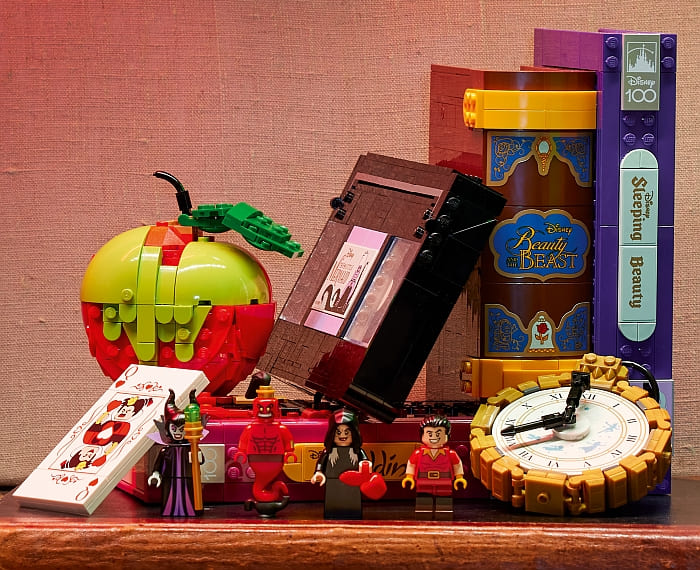
Finally, we have the hidden scene surprise. This is not so much a method used to hide something that can be removed, rather this is great for embellishing a piece. You can make them flat or multi-dimensional. We have both examples in this set. For multi-dimensional, we have the magic rose in the top of the Beauty and the Beast book. This required a significant amount of space and it needed to make sure that none of the pieces would snag. For that reason, extra attention is paid to the edges of the hidden compartment. Curved slopes help minimize any points of collision, while the display itself is kept restrained and does not go beyond the panel it is tied to.
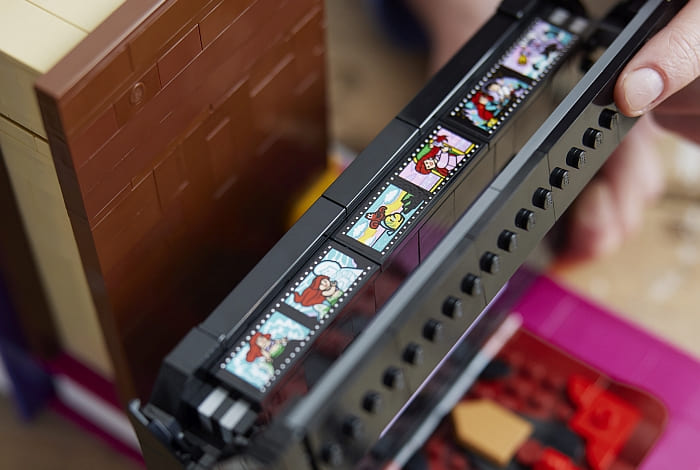
The other hidden scene is the flat design. We get an example of this when pulling back the flap of the VHS tape. This reveals a number of stickered scenes from The Little Mermaid film. Many probably won’t bother with this technique since it doesn’t really have a building aspect to it. Rather it is more based on creative art being hidden. However, it is important to point out we have been seeing more shaped tiles these days. There’s no reason why an art piece can’t be built.
LEGO DISNEY VILLAIN ICONS – FINAL THOUGHTS
At its core, this set is an art piece. Plus, it also has the functional ability to act as a bookend for those who have the room for it. I was very impressed with how all the hidden elements elevated my opinion of the model. In essence, it added interactive play elements to a model that would otherwise be a bit boring. In the video below, I share some additional thoughts and show you the model in a bit more detail.
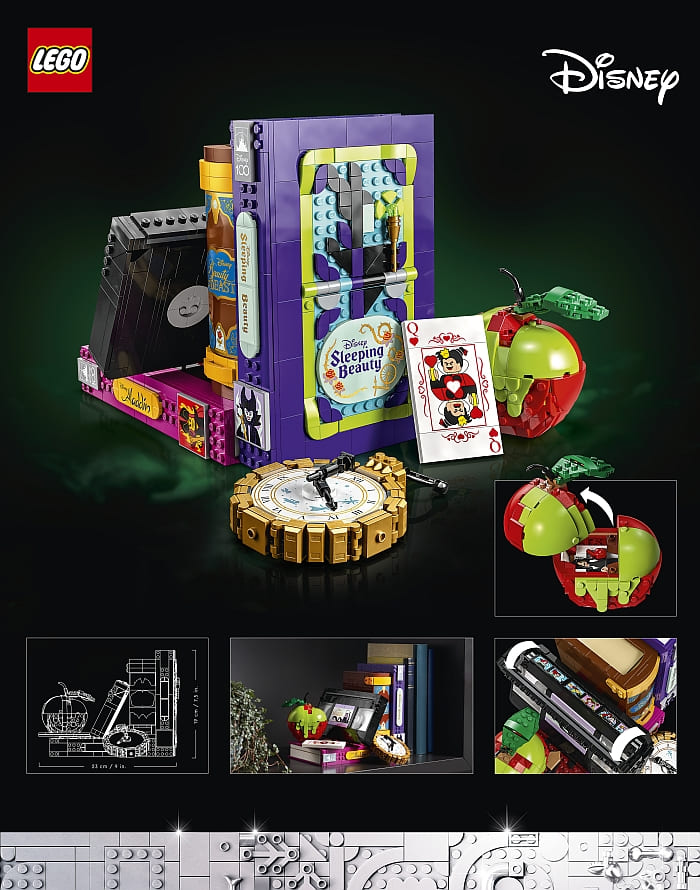
I can’t say this set is for younger builders, even with the small play elements. This is strictly for adults. There’s a high emphasis on display and functionality in what you build. Besides, only an adult of a certain age would probably even appreciate the VHS tape, if I’m honest. And yes, I’m in that age group. Put it simply, this set has just enough to keep an advanced builder entertained, but not so complex that a novice builder would feel lost. Collectors are going to want the minifigures without question and all the hidden nooks and crannies make the model an excellent conversation starter. Overall, the price is fair for what you get as long as you aren’t expecting a toy. If you would like to check it out, it’s available at the LEGO Disney section of the Online LEGO Shop.
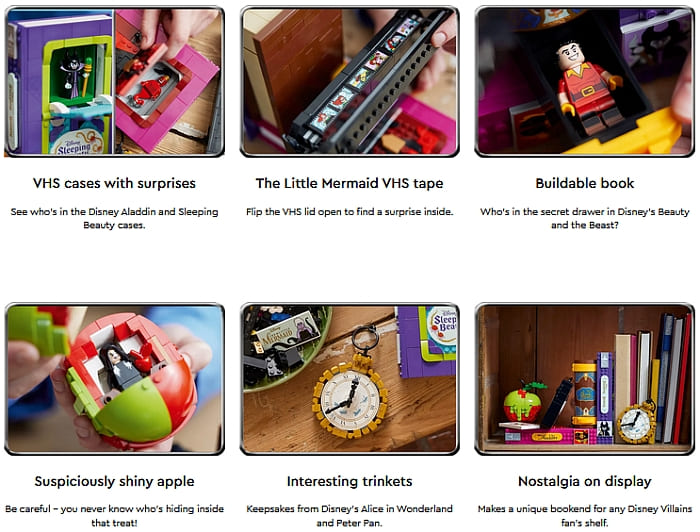
What do you think? How do you like the LEGO Disney Villain Icons? Do you have the set already? What do you think of the building techniques? Are there any other interesting features you have noticed? Feel free to share your thoughts and own reviews in the comment section below!
And you might also like to check out the following related posts:












This looks like a great set. I don’t really like Disney films, and definitely never cared about THESE Disney films, but I think I’ll get it for my wife, since my Star Wars and space sets need at least a little contrast!
As an old stickler, I have to nitpick on how – unlike film stock- the magnetic tapes of old VHS cassettes were all black, and didn’t contain any images you could see without actually playing the cassette…
Otherwise, it’s a pretty cute set overall…
This looks great as a bookend. I like it. And now that I[m hearing the building techniques are interesting too, it went on top of my wanted list. Maybe next month.
My kids are not interested in this, but I can see the appeal. I might have to pick this up for myself in secret. Haha
It just occurred to me that the apple could be converted to a caramel apple by just changing the colors. 😀
All those printed pieces! Man! I really need that playing card!